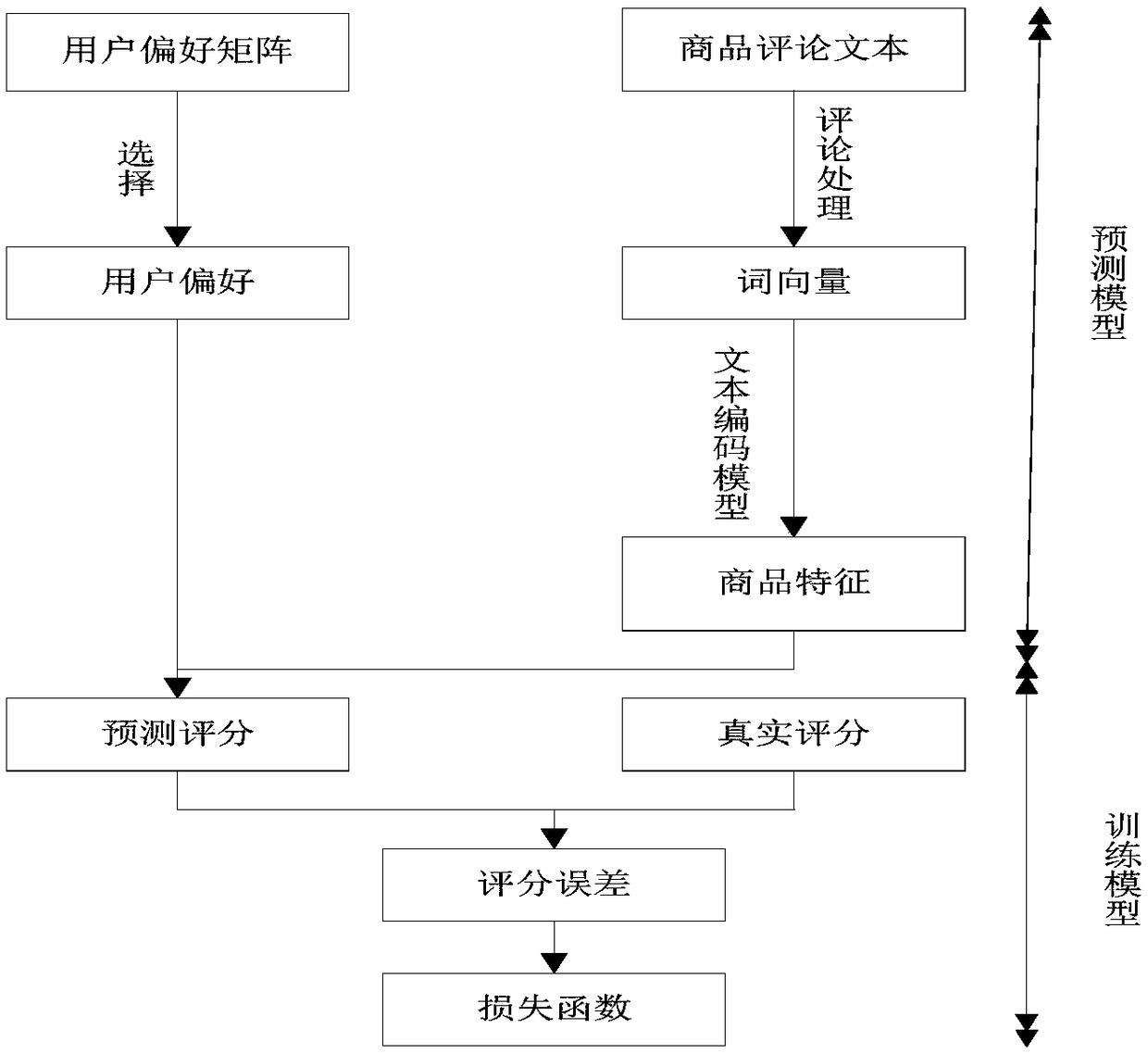A hybrid recommendation method based on sparse edge denoising and automatic coding
A noise-reduction automatic encoding and hybrid recommendation technology, applied in natural language data processing, marketing, instrumentation, etc., can solve the problems of learning ability and classification accuracy not as good as SmDAE, not considering the problem of silent users, and insufficient learning of hidden features, etc., to achieve Improve algorithm efficiency and recommendation accuracy, improve prediction scoring accuracy, and enhance product feature representation
- Summary
- Abstract
- Description
- Claims
- Application Information
AI Technical Summary
Problems solved by technology
Method used
Image
Examples
Embodiment 1
[0047] Embodiment 1: as figure 1 As shown, a hybrid recommendation method based on sparse edge denoising automatic coding, including the following steps:
[0048] Step1: Combine each product review into a review document, use TF-IDF to process the review text of each product, select the word with the highest TF-IDF value to construct the product content vector as the feature representation of the product;
[0049] Step2: Use the product content vector to train the sparse edge denoising auto-encoding model, use the trained model to further extract product features from the product content vector, use the cosine similarity to calculate the similarity of the product feature vector, and get the influence of neighboring products;
[0050] Step3: The influence of neighboring products is combined with the user-score matrix decomposition to obtain the predicted score.
[0051] As a preferred solution of the present invention, the specific steps of the step Step1 are:
[0052] Step1....
PUM
 Login to View More
Login to View More Abstract
Description
Claims
Application Information
 Login to View More
Login to View More - R&D
- Intellectual Property
- Life Sciences
- Materials
- Tech Scout
- Unparalleled Data Quality
- Higher Quality Content
- 60% Fewer Hallucinations
Browse by: Latest US Patents, China's latest patents, Technical Efficacy Thesaurus, Application Domain, Technology Topic, Popular Technical Reports.
© 2025 PatSnap. All rights reserved.Legal|Privacy policy|Modern Slavery Act Transparency Statement|Sitemap|About US| Contact US: help@patsnap.com



